

People get tattoos for all different reasons. Some just get them to be a canvas or art, while others get to correct skin abnormailties.
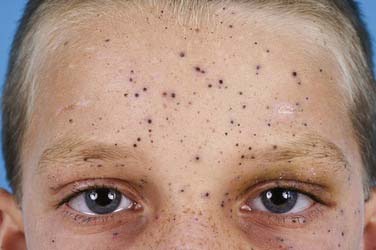
A traumatic tattoo is when a dark powder or sunstance gets into a wound and the wound heals over it. For example, coal dust would get into the wounds of a coalminer, creating permanent marks. Gun powder can do the same. These are particularly difficult to remove as they tend to be spread across several layers of skin, and scarring or permanent discoloration is almost unavoidable depending on the location.
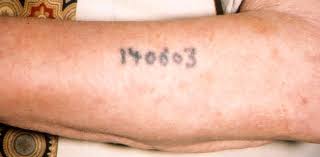
In some situations, people have been forced to be tattooed in order to be identified. This instance is most popularly known during the time of the Holocoause where Jewsih inmates at concentration camps would be tattooed with a serieal number. This type of tattoo has also occured as early as the Zhou. Chinese authorities would employ facial tattoos as a punishment for certain crimes or to mark prisoners or slaves. During the Roman Empire, Roman soldiers were required by law to have identifying tattoos on their hands in order to make desertion difficult. Gladiators and slaves were also tattooed: exported slaves were tattooed with the words "tax paid", and it was a common practice to tattoo "Stop me, I'm a runaway" on their foreheads. Animals are also tattooed for identification.

This tattoo trend has greatly increased over the years. It is more less invasive than cosmetic surguries. This tattooing includes permanent makeup and hiding or fixing skin discolorations. Permanent makeup is the use of tattoos to enhance eyebrows, lips, eyes, and even moles, usually with natural colors, as the designs are intended to resemble makeup. Another popualr cosmetic tattoo trend is called the "titoo." This tattoo is given to breast cancer patients and survivors to cover up the scars of a mastectomy. For women who decide not to get reconstructive survery, these tattoos show the story, strength and fight these women have. FOr women who decide to have reconstructive surgery, they can get a realisitc looking nipple tattooed on them.
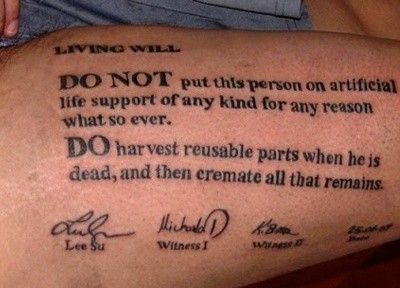
Functional tattoos are used primarily for a purpose other than aesthetics. One such use is to tattoo Alzheimer patients with their name, so they may be easily identified if they go missing
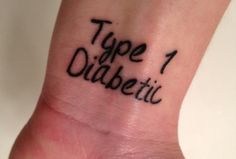
Medical tattoos are used to make sure instruments are properly located for repeated application of radiotherapy and for the areola in some forms of breast reconstruction. Medical tattooing has also been used to convey medical information about the wearer, like blood group, medical condition, etc. Additionally, tattoos are used in skin tones to cover vitiligo, a skin pigmentation disorder.
Many tattoos serve as rites of passage, marks of status and rank, symbols of religious and spiritual devotion, decorations for bravery, sexual lures and marks of fertility, pledges of love, punishment, amulets and talismans, protection, and as the marks of outcasts, slaves and convicts. The symbolism and impact of tattoos varies in different places and cultures. Tattoos may show how a person feels about a relative (commonly mother/father or daughter/son) or about an unrelated person. Today, people choose to be tattooed for artistic, cosmetic, sentimental/memorial, religious, and magical reasons, and to symbolize their belonging to or identification with particular groups, including criminal gangs or a particular ethnic group or law-abiding subculture.

Popularized by tattooist Norman “Sailor Jerry” Collins in the 1930s, this style is based on bold, clean black outlines and a minimal, well saturated color palette consisting mainly of primary colors. Traditional imagery typically consists of skulls, roses, and daggers.
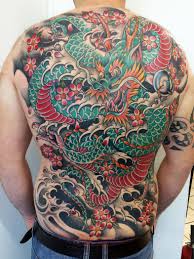
Inspired by the ancient Japanese tebori (hand carved) tattooing techniques, the traditional Japanese style was popularized in Japan by the Yakuza, the Japanese criminal underworld. Like American traditional, it is based on bold black outlines and minimal shading, but typically features images inspired by traditional Japanese art and nature as well as creatures and characters from Japanese folklore. Traditional Japanese imagery typically consists of lotus flowers, koi fish, tigers, warriors and waves.

Realism is a style that tries to recreate images as they would appear in real life. Realism typically lacks the bold outlines found in more traditional forms of tattooing and instead uses shading and color contrasts to render the image

Black and grey typically goes hand-in-hand with realism tattooing, however instead of using color, traditionally black and grey tattooing only uses black ink and water. Tattooists will water down the black ink to make it softer and more grey in order to create shades, hues and color contrasts. Nowadays many newer artists will use grey washes, or pre-watered down black ink, as well as actual grey ink and white ink for highlights.

Portraiture is a style typically done in realism in which a portrait of someone is recreated as a tattoo. Realism portraits can be found in color or black and grey and usually are created by making a stencil over a pre-existing photograph or image in order to get an exact likeness of the image to be inked.
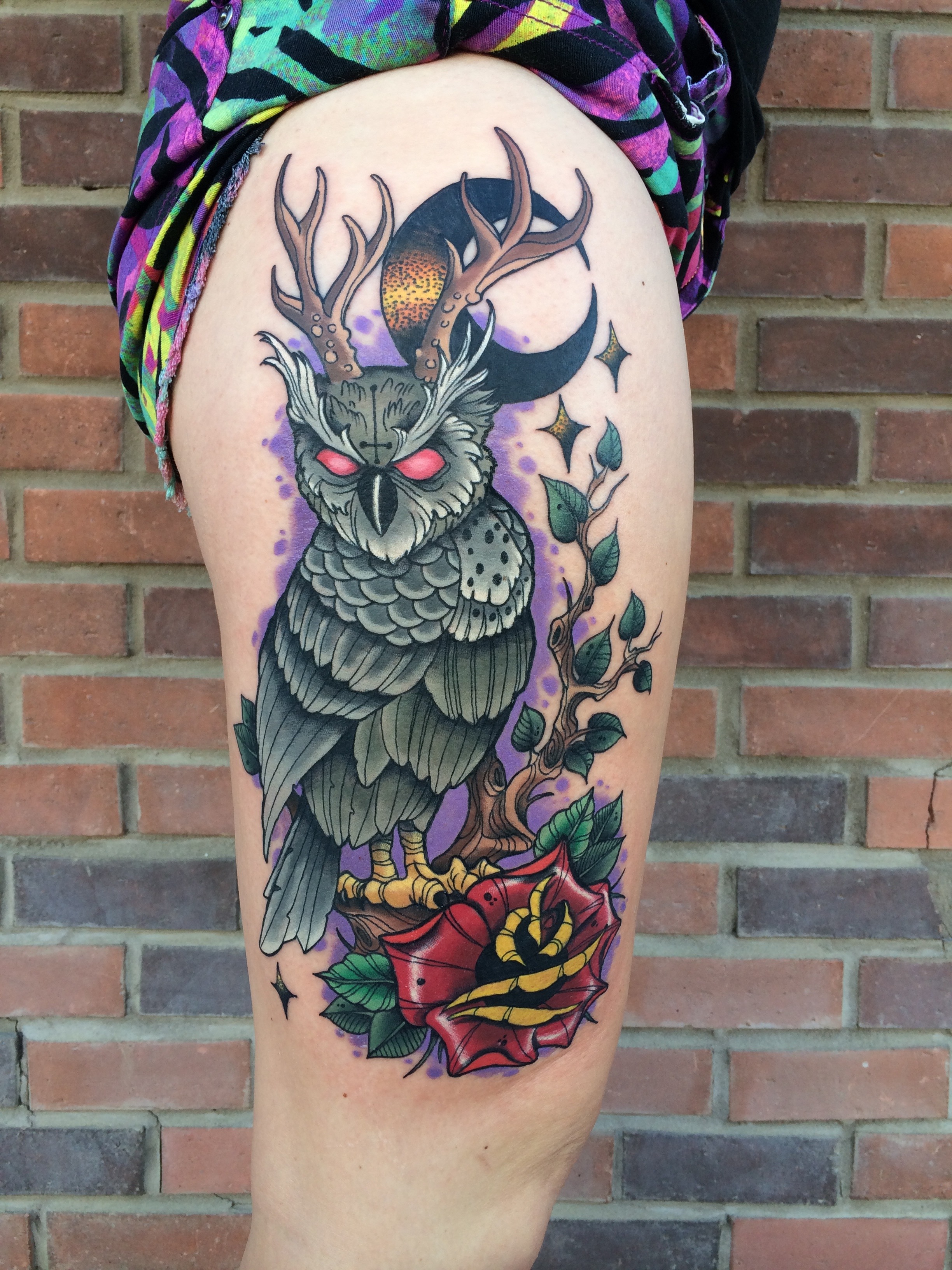
Illustrative styles combine techniques from both traditional styles of tattooing and realism. Typically they feature bold outlines with intense color saturation paired with realistic shading techniques in order to create a tattoo that looks more like an illustration than a tattoo
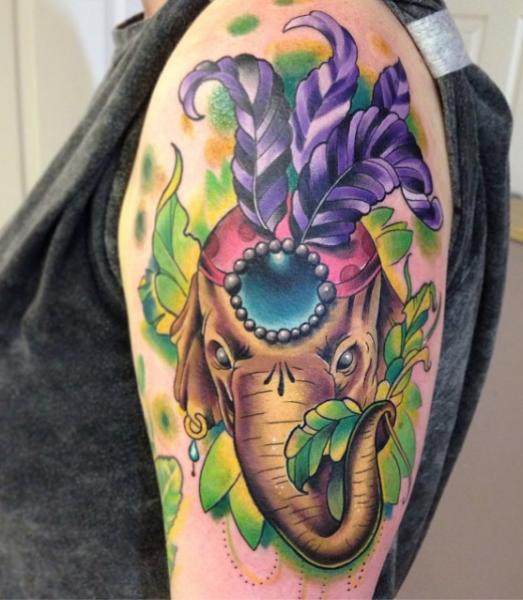
New School is a highly animated style of tattooing that reads like a more exaggerated version of the illustrative style. Typically the images created are caricatured characters doing out of character things. Common New School subject matters include personified objects and animals in fancy clothing.

Lettering ranges from simple tattoos of letters and words in standard fonts to highly stylized custom pieces that are usually free handed on and look both like an aesthetically pleasing design as well as legible letters or numbers.
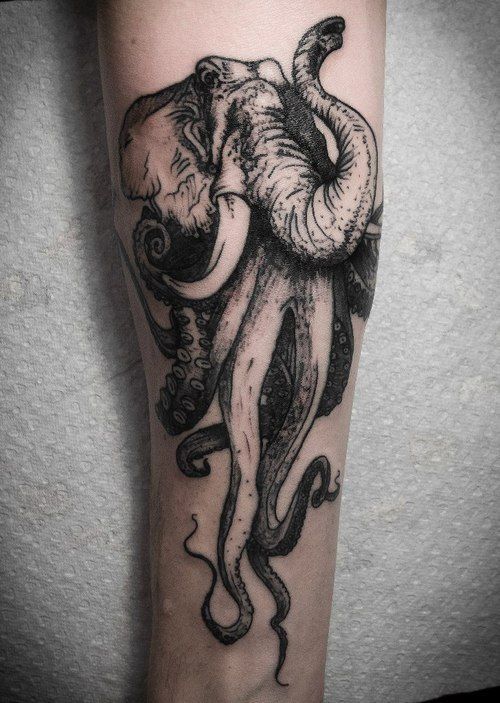
This style is heavily influenced by Salvador Dali and consists of exaggerated, imaginary images, mashed up styles, and fantastical creations that couldn’t actually exist in nature, but look like they could.

Polynesian tattoos are body art derived from the cultural traditions of many Polynesian tribal peoples, like the Maori and the Samoans. Unique designs rooted in tribal symbolism are created for the individual receiving the tattoo and are then usually chiseled or hand-poked into the skin via the tribe’s customary tattooing techniques

Blackwork tattoos are characterized by using only black ink to render images, designs or patterns through intense color blocking and/or impeccable line work. Mandalas are common images used in blackwork tattoos.
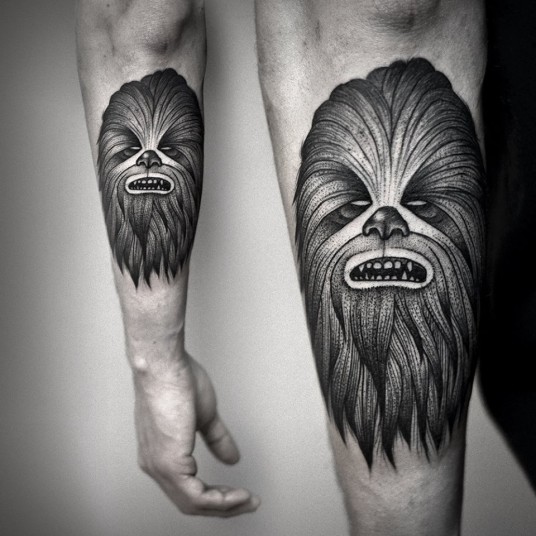
Dotwork is a style of tattooing that renders various images, designs and patterns entirely through dots. Shading and depth is created through how far apart each dot is from the next. Common forms of dotwork include sacred geometry and stipple portraits.

Geometric tattoos are done typically using only lines and geometric shapes. Sacred geometry and ornamental color design work all rely heavily on basic geometric conventions.
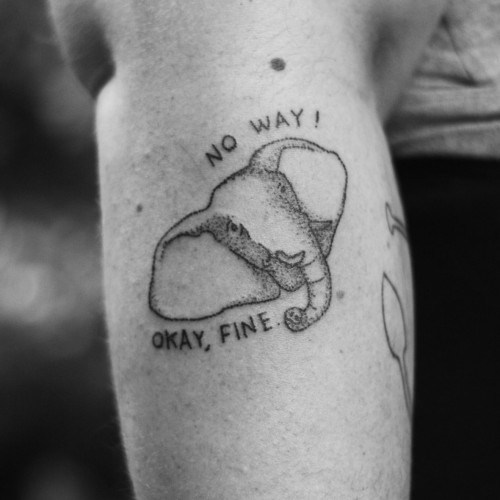
This modern form of DIY tattooing is done using a single needle that is dipped in ink and then poked through the skin repeatedly to create a simple design.

Watercolor tattoos lack all outlines and imitate the brushstroke aesthetic and standard color palette of watercolor paintings.